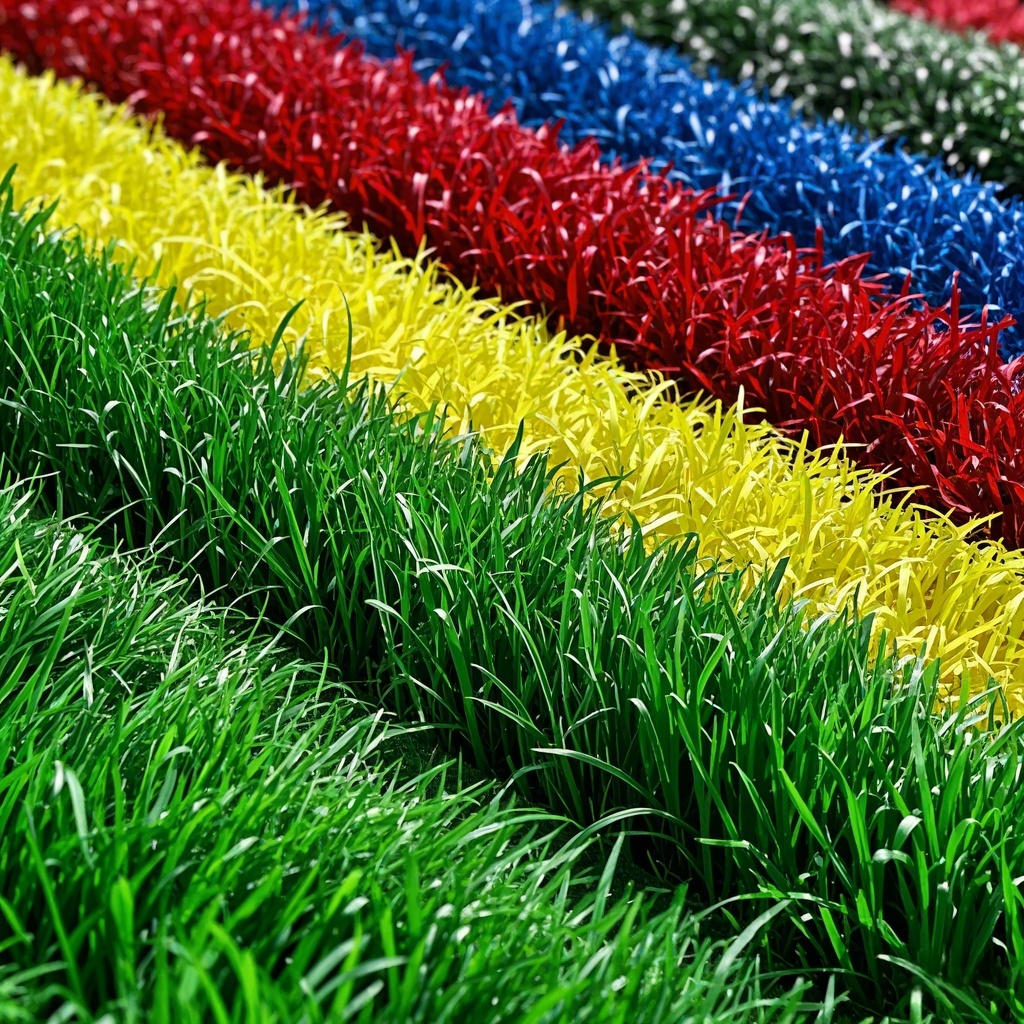News Center
Shandong Zhensure New Materials Technology Industry Co., Ltd.
Artificial turf, as a synthetic ground covering material, has been widely used in many fields in recent years, including sports fields, garden landscaping, home decoration, etc.
It has many benefits compared to natural turf. Here are some of the main advantages:
Low maintenance cost:
Artificial turf does not require daily maintenance such as watering, fertilizing, and mowing, which greatly reduces the time and cost required for maintenance.
It is not easily affected by seasons and can remain green and beautiful even in drought or cold seasons.
Strong durability:
Artificial turf is made of high-quality synthetic fibers and generally has high wear resistance and weather resistance, and can withstand the test of large traffic and activities.
It can resist the erosion of ultraviolet rays, chemicals and extreme weather conditions, and extend its service life.
Environmental protection and energy saving:
Artificial turf has significant advantages in environmental protection due to the reduction of water use and the application of fertilizers and pesticides.
It can also reduce the waste generated by lawn mowing, thereby reducing the burden on the environment.
High aesthetics:
Artificial turf has a uniform green appearance, which can enhance the overall aesthetics of the venue.
It can also be customized according to customer needs, such as different colors, textures and lengths to meet specific aesthetic and functional needs.

Versatility:
Artificial turf is suitable for a variety of occasions, such as sports venues such as football fields, basketball courts, tennis courts,
as well as leisure places such as home gardens and roof terraces.
It can also be used for temporary venues such as commercial displays and event layouts, providing flexible use methods.
High safety:
The surface of artificial turf is usually made of soft materials, which can reduce the risk of injury when falling.
It can also effectively prevent slips and trips and provide a safer use environment.
Economic benefits:
Although the initial investment of artificial turf may be high, it has a higher economic benefit overall considering its long-term maintenance cost and service life.
It can also enhance the value of the venue, attract more people and activities, and bring potential economic benefits.

In summary, artificial turf has significant advantages in maintenance costs, durability, environmental protection and energy saving,
aesthetics, versatility, safety and economic benefits. However, when selecting and using artificial turf, factors such as specific application scenarios,
budget and environmental protection requirements must also be considered to ensure that it meets actual needs and achieves the best effect.
Wood-plastic Composite (WPC) is an innovative material that combines natural Wood fibers with thermoplastic plastics, featuring both the warm texture of wood and the durability of Plastic. With the enhancement of environmental awareness, the application of wood-plastic composites in the fields of construction and home furnishing is becoming increasingly widespread. Its waterproof, moisture-proof and moth-proof properties make it an ideal choice for outdoor flooring, fences, flower boxes and other scenarios. The rich colors and textures also make wood-plastic products shine brightly in indoor furniture and wall decoration. This article will take you into the diverse application scenarios of wood-plastic composites and explore how they infuse different Spaces with dual values of nature and practicality.
Wood-plastic Composite (WPC) is an innovative material that combines natural Wood fibers with thermoplastic plastics, featuring both the warm texture of wood and the durability of Plastic. With the enhancement of environmental awareness, wood-plastic composites are widely used in outdoor flooring, courtyard fences, interior decoration and other fields. However, proper cleaning and maintenance are the keys to maintaining its performance and appearance. This article will provide you with a complete guide from basic cleaning to deep maintenance, keeping your wood-plastic space looking as good as new for a long time.
Wood-plastic composite materials are a new type of environmentally friendly material made of wood fiber and plastic (mainly polyethylene, polypropylene and other thermoplastics). They are water-resistant, anti-corrosive, moisture-proof, wear-resistant, flame-retardant, have a long service life and can be recycled. They are widely used in construction, furniture, gardening, packaging logistics, automotive interiors and other fields.
The wood-plastic composite (WPC) industry has been experiencing significant growth due to increasing environmental awareness and the promotion of circular economy policies. As an eco-friendly material, WPC offers durability, water resistance, and recyclability, making it a popular choice in various industries.
The article elaborates on these advantages and points out that artificial turf can reduce the use of water resources and fertilizers and pesticides, reduce maintenance costs, and provide a beautiful, safe and durable ground solution. In addition, artificial turf is suitable for a variety of occasions, can enhance the value of the venue and bring potential economic benefits.